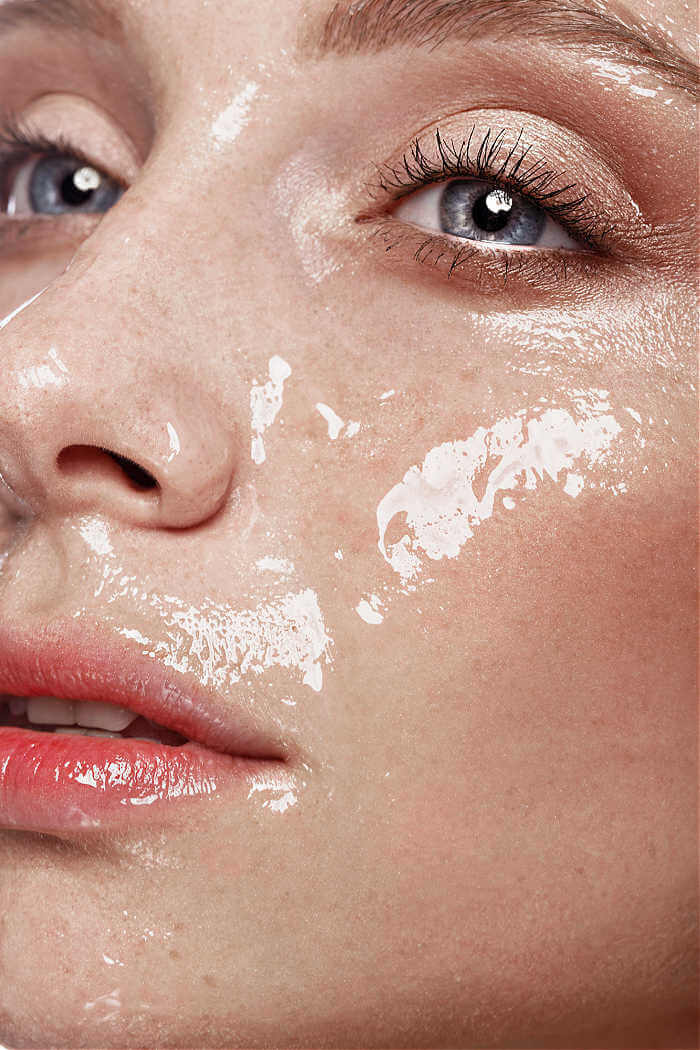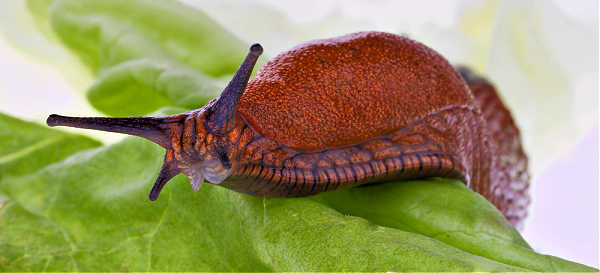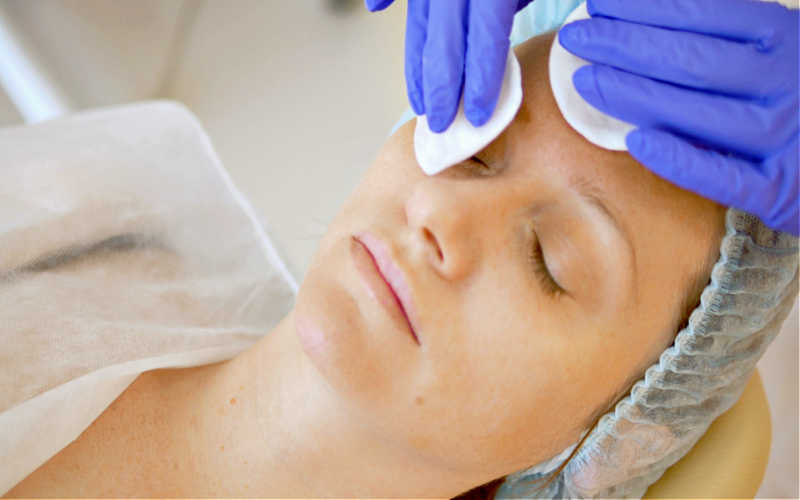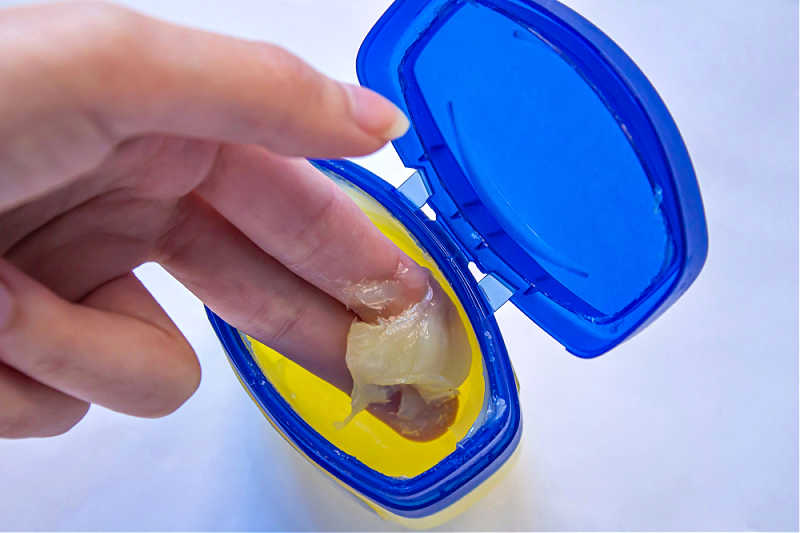As an Amazon Associate, I earn from qualifying purchases and other affiliate links. I only recommend products I’ve tried or researched.
- Home
- Slugging After Chemical Peel
Slugging After Chemical Peel
by: Linda Robison / Facial Fitness Specialist
What is slugging, and why are people doing this after chemical and exfoliation treatments? Which petroleum jelly based product is best?
Slugging after a chemical peel can provide hydration, promote healing, and result in a smoother, more youthful appearance, often described as 'glass-like' skin.

Slugging usually includes the use of products such as Vaseline, Aquaphor, or other occlusive moisturizers.
But the question is: Which one should you opt for?
Also, is it safe to put these on right after chemical peels, or should you wait? When's the best time to do it?
We've got all your questions about slugging after chemical and exfoliating treatments covered—just keep reading below...
What is slugging
Slugging refers to a hydrating nighttime skincare routine.
It's where you apply a thick layer of petroleum jelly or some type of occlusive moisturizer to your face before going to bed.
The purpose of slugging is to create a moisture barrier that prevents water loss, and promotes skin hydration during the night.
Why is this skincare routine called slugging?

Believe it or not, but the term was inspired by those slimy little garden adventurers - slugs!
It's all about the thick layer of gooey moisturizer (usually petroleum jelly) that makes your face shine like a slug's trail.
So, when you're slugging in skincare, you're basically turning your face into a glamorous slug runway. Who knew skincare could be so slimy and stylish at the same time?😄
How does slugging work
Here's how slugging typically works:
1. At nighttime, clean your face well and dry lightly.
Tip: I like to leave my face a little damp to help seal in moisture.
Then apply a light layer of petroleum jelly or an occlusive moisturizer to your entire face and lips.
2. Gently massage the product into your skin, ensuring an even layer.
3. Wait 30 minutes before going to bed to allow the moisturizer to sink into the skin.
4. Leave the product on overnight. Then make sure to wash off well in the morning using your usual cleanser.
Is slugging after a peel safe

The safety depends on what type of peel you had and when you had it done.
It's important to note: If you received a professional in-office peel, it's best to follow your provider's post-peel care instructions.
This includes using gentle, hydrating products and avoiding heavy occlusives until your skin has fully recovered.
Why?
Slugging is all about slathering on a thick layer of petroleum jelly or a heavy moisturizer to keep your skin hydrated overnight.
But, after a deep chemical peel, your skin needs to recover naturally.
Slugging might not be the best move because it could trap stuff, slow down the healing process, and up the chances of issues like infections or irritation.
Plus, chemical peels aim to shed the old, damaged skin layers. Using heavy moisturizers right after can put the brakes on this exfoliation.
How to do slugging after a peel

If you've undergone a mild or superficial at-home peel, such as an alpha hydroxy, beta hydroxy, or lactic acid peel, applying an occlusive moisturizer can help prevent excessive dryness and providing soothing relief.
Personally, my face always feels a bit tight and dry when I do an at-home peel using 70% lactic acid. But slugging before going to bed, really helps relive the tightness and makes my skin look better in the morning.
Here's a step-by-step guide on how to do slugging after an at-home superficial peel
- Complete Your At-Home Peel: Follow the instructions provided with your at-home peel.
- Rinse and Pat Dry: After the recommended peel time, rinse off the peel solution with lukewarm water, and gently pat your face with a clean, soft towel.
- Wait 4-6 Hours: Allow your skin to recover and go through the initial stages of peeling for 4-6 hours before proceeding with slugging. This waiting period is crucial to avoid interfering with the effectiveness of the peel.
- Select Your Occlusive Moisturizer: Choose an occlusive moisturizer such as petroleum jelly (like Vaseline) or Aquaphor. These products will create a protective barrier on your skin to lock in moisture.
- Apply a Layer: Take a small amount of the occlusive moisturizer and gently apply it evenly across your entire face. You don't have to goop up your face like they do on TikTok. 😊
- Tip: Don't apply too close to your eyelids, as it can migrate into the eyes and cause discomfort or blurred vision.
- Leave It On Overnight: Slugging is a nighttime routine. Leave the occlusive moisturizer on your face overnight, allowing it to work its magic. Note: You might want to cover your pillowcases with a towel.
- Morning Cleansing: Cleanse your face with a gentle cleanser to remove the petroleum jelly. You'll likely notice that your skin feels soft and well-hydrated.
- Sunscreen: Prior to going outside, apply sunscreen, as your skin may be more sensitive after the peel.
Remember, everyone is different. So it's important to pay attention to how your face feels.
Slugging with Vaseline, Aquaphor or CeraVe
Which is petroleum jelly product is better, Vaseline, Aquaphor, or CeraVe? The choice between these two popular products largely depends on personal preferences.
But, here's a comparison to help you decide which might be better for you:
Vaseline – Is excellent for sealing in moisture, preventing water loss, and creating a protective barrier. It's a purified form of mineral oil and contains 100% petroleum jelly. And, it's very cost-effective.
Aquaphor - Is also excellent and is used by surgeons, for healing and post-surgery care. It contains water, mineral oil, ceresin, lanolin, panthenol, bisabolol and glycerin. So it has better healing and moisturizing capabilities.
CeraVe Healing Ointment – To me, this looks like the best choice because it also contains ceramides and hyaluronic acid, which are beneficial for skin health. Ceramides help support the skin barrier, and hyaluronic acid provides hydration.
Final tips about slugging after a chemical peel
Slugging after a chemical peel, does not mean you should do this immediately after a chemical peel. Give your skin a few hours to slough off dead cells.
Apply a petroleum based product at night before bed.
Sleeping with a petroleum moisturizer overnight helps with healing and keeps your skin hydrated.
In the morning, be sure to rinse it off well. And remember to apply sunscreen before heading outdoors.
About the Author:
Linda Robison is a Facial Fitness Specialist and the founder of Anti-Aging Beauty Zone. With decades of hands-on experience, she shares practical, natural ways to lift and brighten mature skin—without expensive or invasive treatments.
Before you go ....
Please tap on the💙in the bottom right corner if you found this page helpful.
FOLLOW ME FOR MORE TIPS:
SHARE OR SAVE FOR LATER:

